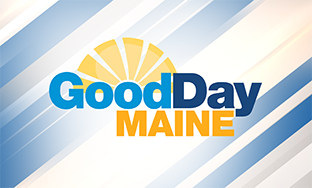
Maine has won
$236 million from legal settlements against opioid manufacturers.
Cumberland County
will get $211,000 per year for the next 18 years. With the money they've already received ($600k), That will add up to almost $4.5 million.
So far in Portland it’s funded a program to buy back used needles, provide showers and food for the homeless, a mobile medical van to treat people who overdose, more.
The county also wants to ramp up its harm reduction measures, which they
define as “a movement for social justice built on a belief in, and respect for, the rights of people who use drugs.”
That will include supporting the work of the county’s Mental Health liaisons and Community Engagement Liaisons. They provide support and resources to those at risk of overdose and advocate for low-level offenders to be sent to treatment centers instead of prison.
Question 2: How is the funding split between the state and local governments?
The Attorney General and Maine’s cities decided that half of the money goes to the Maine Recovery Council: 15 people appointed by the state who will decide how to use the money. 20% goes straight to the Attorney General, and 30% goes to local governments.
The AG and the local governments will not be legally required to publish publicly-available reports on how they spend the money. That’s not normal. Vermont is the only other state in New England that hasn’t promised to release the state-level data.
We’ve seen this transparency issue before from the Maine government. We looked into their spending of Covid relief funds, but the state’s 415-page report was missing the most important info: how much money they actually spent. We reached out directly to their press team and they still didn’t tell us.
Question 3: Why is transparency so important when we talk about spending opioid settlement money?
Many local and state governments are not well-equipped to handle a sudden influx of cash like this, and we’ve seen problems pop up all around the county.
Some areas are spending their money too fast.
Delaware’s attorney general warned them last summer that their settlement money was likely being lost to fraud. Instead of pausing the spending, they gave out another $2 million just days later.
Others are spending it too slow.
Long Island got over $200 million from opioid settlements but they’ve only spent $8 million. The rest is sitting in their bank account because the process for spending it has so much red tape.
Philadelphia was recently found to have spent $7.5 million of its settlement money on upgrading playgrounds and repairing roofs instead of fighting drug addiction as intended.
Question 4: How does Maine’s settlement money compare to other states?
Only 10 states got less than Maine.
Most of New England has a fairly low amount except Pennsylvania; they got more than the rest of New England combined.
California has the most money with almost $4 billion. But there’s still some big lawsuits ongoing. Baltimore is asking for $5 billion just for their city.